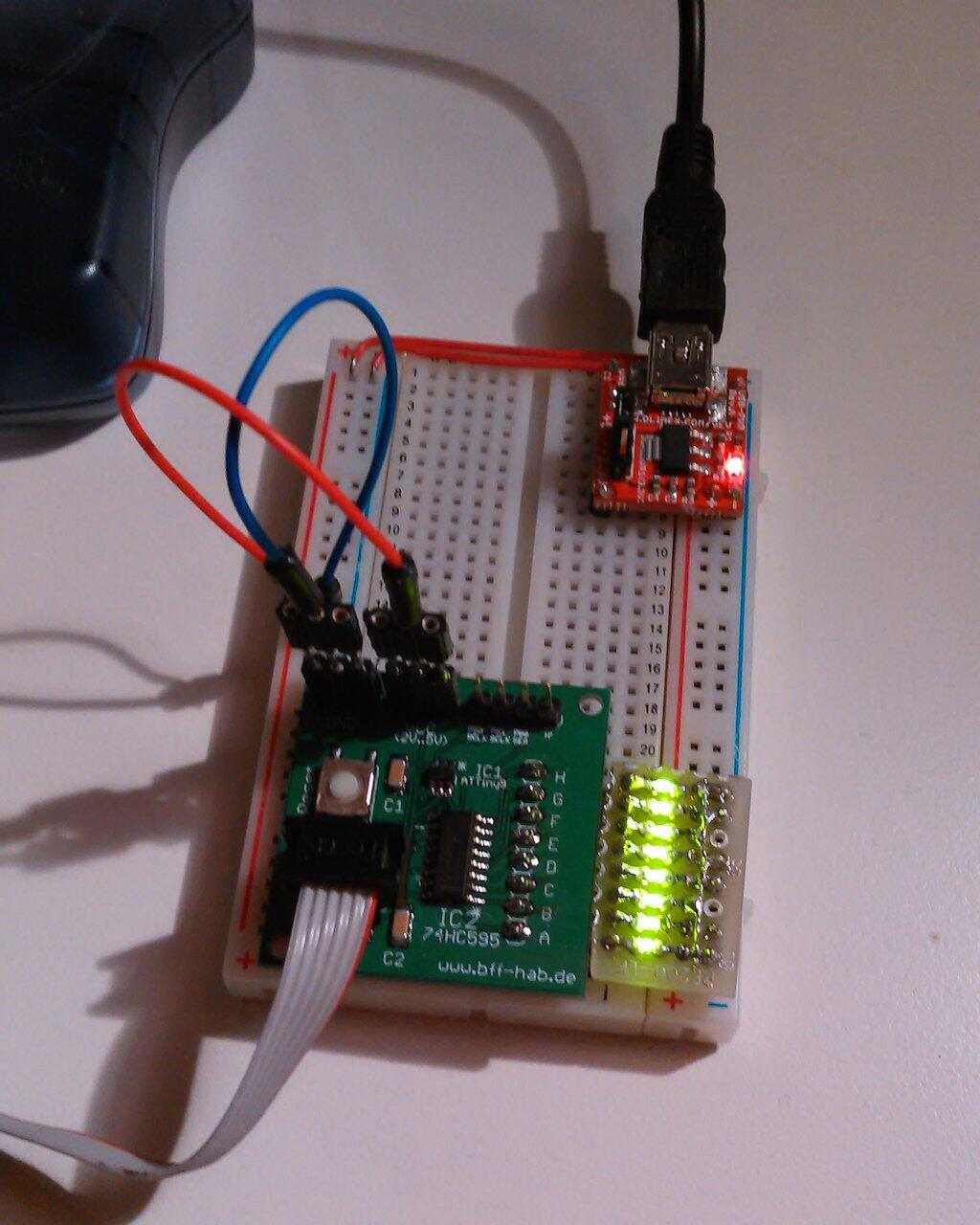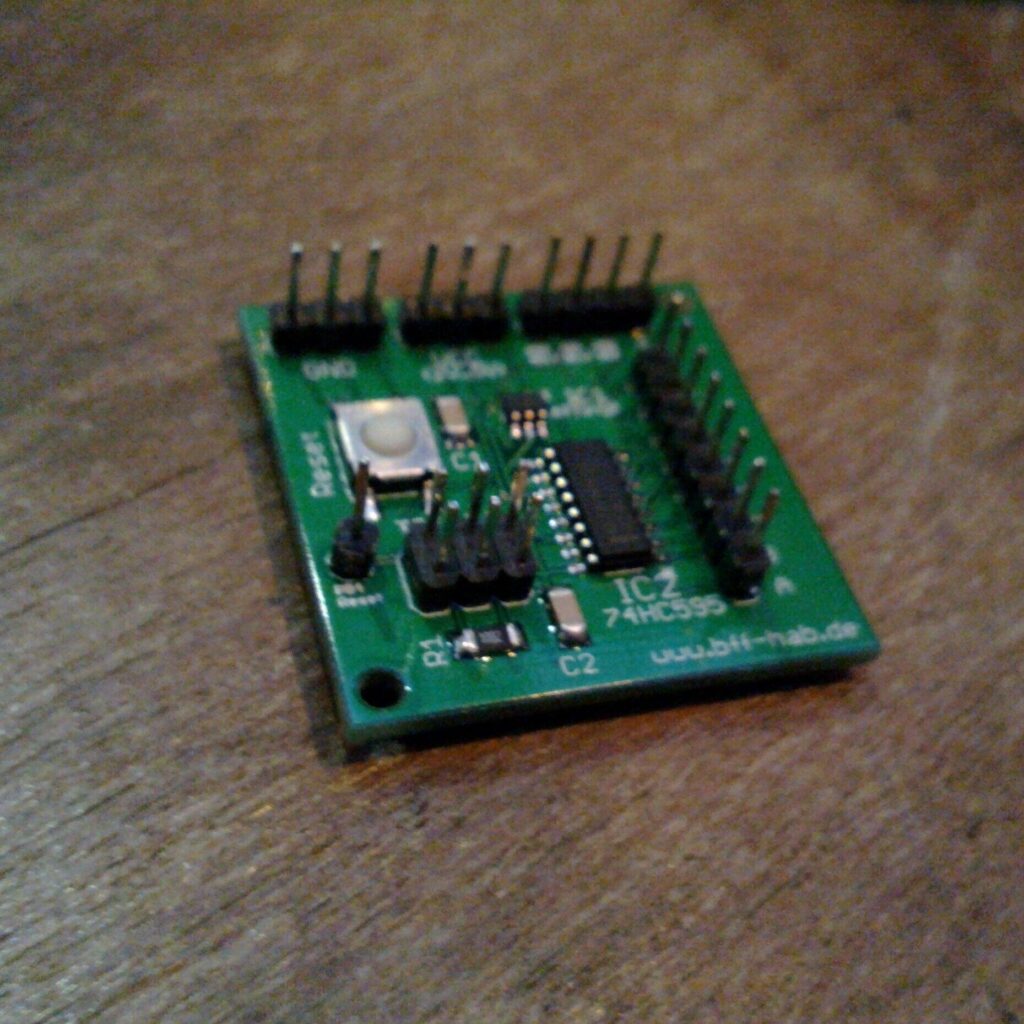
Originally published at https://twitter.com/raimue/status/433353488043499520
Compared to the ATtiny9 on this board, my previous setup with 10mm LEDs took way too much space. So I miniaturized it with some spare SMD components I still had from previous projects.
This LED bar is breadboard compatible and fits directly onto the board. I deliberately chose to make it a bit larger than it had to be, now taking 5 pin columns of space. This size allows to use it on either side of the breadboard, as the Vcc and GND bus strips are switched on the other side. I also decided to leave out two pins on the GND pin header to make it fit in more different positions on the board, which was necessary due to pin grouping. Besides that I had to solve alignment issues, as the pins on the GND strip and the rest are a little bit shifted. I had to use a little bit force by pushing it into its position and then solder it as it was plugged onto the breadboard.
Actually this was not only for the ATtiny9 thing, but I think this device will be helpful in the future in general. From now on I will always have some LEDs available for the breadboard without fiddling around with wires and resistors.

